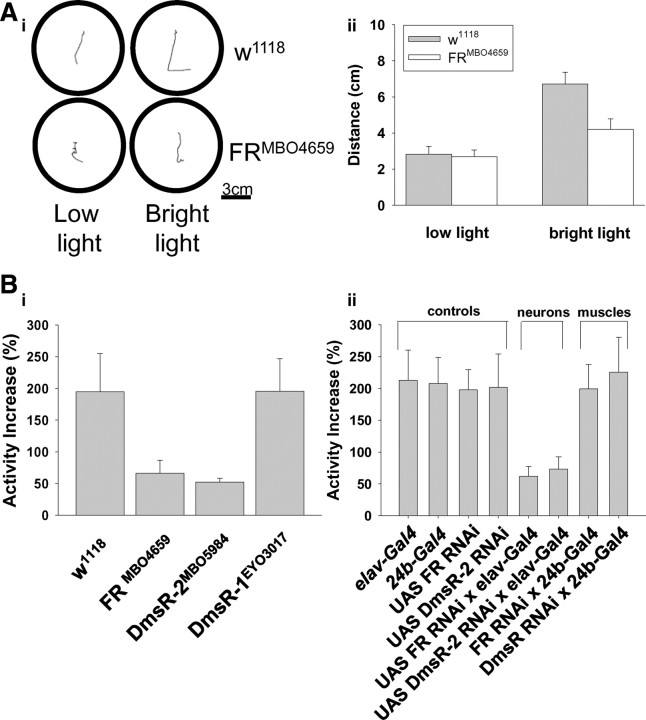Figure 6.
DPKQDFMRFamide enhances larval locomotion. Ai, Sample wandering paths from one w1118 and one FRMB04659 mutant larvae during a 2 min recording period under dim light (room temperature) conditions and then subsequent bright light conditions (34–36°C). Aii, Distance traveled in mutant FRMB04659 (n = 10) and wild-type background (w1118) (n = 10) over a 2 min recording period at low light and then a subsequent 2 min recording period at bright light (p = 0.01). Bi, The stress-induced increase in locomotor activity ((bright light − low light)/low light) was significantly reduced in the mutants FR MBO4659 [Mi{ET1}CG2114MB04659] (p = 0.02; n = 7) and DmsR-2MBO5984 [Mi{ET1}CG13803MB05984] (p = 0.01; n = 7), but not in DmsR-1 (DmsR-1EYO3017) (p = 0.02; n = 7). Bii, Disruption of the normal behavioral stress response through knockdown of either the FR or the DmsR-2 receptor using targeted RNA interference in neurons. The percentage increase in locomotor activity resulting from bright light exposure was significantly reduced in both UAS FR RNAi × elav-Gal4 (n = 6; p < 0.01 for both) larvae and UAS DmsR-2 RNAi × elav-Gal4 (n = 6; p < 0.05 for both) compared with their respective controls, UAS FR RNAi (n = 6), UAS DmsR-2 RNAi, and elav-Gal4 (n = 6). The activity increase when RNAi knockdown of FR was targeted to muscles, FR × 24b-Gal4 (n = 6), was not different from the controls 24b-Gal4 (n = 6; p = 0.3) or FR (n = 6; p = 0.4), FR,DmsR-2. DmsR-2 × 24b-Gal4 (n = 6; p = 0.7).

